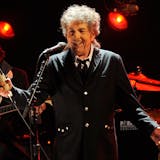It’s not on the northern forest roads, or on a long winding curve where it’s hard to see. It’s not in the grasslands or on the narrow county highways that roll past farms and thick corn fields. The most likely place for a deer to suddenly jump out in front of a car and cause a crash in Minnesota is just outside of Minneapolis, on one of the busiest roads in the state — Interstate 94 between Maple Grove and St. Cloud.
“When you get just outside the real metro urban area and into the outskirts of Twin Cities, that’s where you get this confluence of a having a really high deer density and lots and lots of traffic,” said Ron Moen, a wildlife biologist at the Natural Resources Research Institute in Duluth.
Scientists at the institute and the University of Minnesota are finishing a project to map exactly where in the state drivers are most likely to hit a deer. The map, which hasn’t been published yet, will be publicly available by the end of the summer. The hope is that the data will help road engineers find the most dangerous stretches and prioritize where to put up wildlife fences or other protections, Moen said.
The study found that about two-thirds of Minnesota deer-vehicle collisions each year happen just outside the Twin Cities, especially in the suburbs leading out to St. Cloud.
That’s because there seems to be three main factors for deer collisions, Moen said: The speed of the vehicle, the number of cars on the road and the amount of deer in the area.
Add in highway speeds, and the suburban areas can become particularly difficult places for drivers to avoid deer.
Moen said he and other researchers began the study thinking that visibility would play a much bigger role in the accidents than the data ended up showing. Big curvy roads in wooded areas had fewer deer collisions than expected.
“That’s probably, in part, because people are paying more attention on the curve and slowing down a little,” he said.



